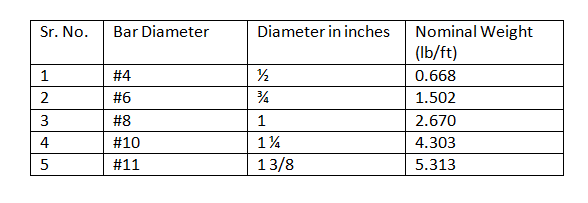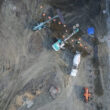Bar Bending Schedule or BBS is actually a detailed tabulated worksheet showing the particulars of reinforcing bars as needed in reinforcement drawings of a structure. The phrase “Bar Bending” is so because at the steel yard where different types of reinforcement are cut and bent this table is used as a reference to bend the reinforcement bars in desired and required shape and sizes.
 |
| What information a bar bending schedule should contain? |
Bar Bending Schedule summarizes and should contain the following Information :-
1. Bar Mark No.
In Contractual practice of construction projects, the designed made by consultants termed as the Engineers are issued as Construction Drawings by a covering letter termed as Drawing Transmittal Slip (DTS). These construction drawings are typical drawings only showing the criteria of design and requirement as per the standards of design and detailing.
Keeping in view of these construction drawings, contractor prepares his own shop drawings showing detailed sketches and sections as needed by the structure and as desired by the engineer. These shop drawings are submitted for review and approval of engineer which must be approved prior to the execution of work at site.
The structural drawings showing reinforcement in construction drawing only annotate the diameter and spacing along with orientation and occasionally quantity but not too often.
The structural shop drawings on the other hand show the quantity, orientation, Bar designation also known as Bar Mark No. or Bar Annotation No. It is a unique designation of the reinforcement bar which is noted at the end in Bar Bending Schedule.
The two reinforcing bars must be given different designation no. if the bar length is changing or if the bar shape is changing.
2. Cut Length
It is the nominal length as per the requirement of the structure and construction drawing, usually noted in mm. The cut length may or may not contain the bending length which is the extra length needed to bend a large diameter rebar at angle of 30, 45 or 90 depending on requirement. If the bending length is contained in it than during verification of this BBS by consultant they prepare bend deduction sheet and will deduct the bend as it is not payable in most of the circumstances.
3. No. of Pieces
Bar Bending schedule also provide the quantity and number of pieces of each designated bar. It is calculated by dividing the space / structural dimensions by the spacing as required by the design. For example if the length / span of beam is 6000 mm and it has shear ties at spacing of 300 mm center to center i.e. c/c than the quantity or no. of pieces would be 6000 / 300 = 20 nos.
Like Us on Facebook!
4. Bar Cut Shape
It is the most important column in the Bar bending schedule as far as the bending and cutting of reinforcement is concerned at site. Each bar no. can have different shape depending on the shape of the structure to be reinforced. Thus the bar may have a hook or a bend in any angle which must be properly mentioned. If the bar is provided with a curve than a clear figure showing radius of curvature must be given. Similarly if the reinforcing bar is confined in a sloping portion and the bar is required to have a varying length than a delta is calculated showing the unit increment or decrement of rebar length and must be shown in the bar bending schedule (will be explained later on).
Subscribe Us on YouTube!
5. Bar Diameter
Each bar No. is shown with a diameter of rebar usually in mega projects the diameter used is of #4, #6, #8 or #10 & #11. Small diameter rebar is used in construction joints or as temperature reinforcement and larger diameter bars are main reinforcement bars.
Each Bar Diameter have a nominal corresponding unit weight which is used at the end of the bar bending schedule showing the weight of each category of bar diameter.
 |
| Table showing Each Bar Diameter corresponding to No. and Nominal Unit Weight |















